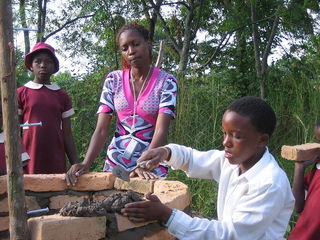Sport and Competition
Soakers and Hard-shells
Different "voices" create an ensemble.
Posted July 13, 2019 Reviewed by Gary Drevitch

The performance season has just ended, and it is the evening of “voice placement” for our auditioned chorus. Until now, that term—voice placement—has seemed like a euphemism, designed to sugarcoat what it feels like: an annual re-audition.
It’s not as scary as it might be, since the artistic director holds the voice placement session with all members of each voice part present: soprano, alto, tenor, bass. Even if some of the time it will be just our voice, for the most part, he clusters voices together, having two or three people—and we’ve been singing together all year—sing perhaps 30 seconds of a piece that we’ve already performed.
Nonetheless, it feels like an audition: Am I in or am I out for next year?
But this evening is different. As he has in the past, the artistic director has us seated in a semi-circle in front of him, clustered by voice part (Alto 1 or Alto 2—higher-voice alto or lower-voice alto). He starts with one pair at one end, then shifts to the other end.
And then he begins moving people around. Musical chairs without the missing chair. No threat. It’s apparently not whether you can sing a high F or a low E. What is he doing and why?
Our curiosity aroused, we’ve moved into a “learner” or “growth” mindset, as Dr. Carol Dweck would say. (See her book or a useful graphic depiction of the difference between growth and fixed mindsets.) Not surprisingly, the tension in our throats eases, vocal cords no longer like clenched fists—and of course we sing better. This isn’t an audition or a re-audition; it’s a question of ensemble.
And the director explains this really is about voice placement—that is, what each voice sounds like in order to get the best choral blend. Ultimately, we end up in two different clusters: “hard-shells” and “soakers.”
Huh?
Each of us produces different vocal “colors,” depending on the vibrations and overtones that we emit. That’s how you can immediately identify one popular singer from another—or a flute from an oboe. Although no one is completely a hard-shell or a soaker, in general, hard-shell voices have stronger overtones, whereas soakers generally have fewer overtones—thus, “soaking up” the extra overtones of the hard-shell voices. The hard-shells are the bricks, the soakers are the mortar; the structure is sturdy. We experience a sense of belonging, each with specific roles that are equally important one to the other.
Conductors take these aspects into account, along with the type of sound each person produces, to decide which voices will vibrate best together. On top of this, they need to consider the four voice parts of the full chorus.
And then, when we get to concert performance, even if all of these details are worked out, there’s the challenge of us as human beings. We come in different shapes and sizes. A tall, wide hard-shell may be ideally placed next to a short, slight soaker, but the visual line that the audience sees—and this artistic director often points out that an audience hears with its eyes—will look strange. And the singer standing in the row in back of the tall, wide hard-shell may not be able to see the conductor—not a good thing. Reworking and fine tooth combing continues.
In this example, I’ve gone deep rather than wide. But the idea can be translated into any type of performance. A friend (who also participated in this voice placement exercise) commented on parallels within their business organization: the importance of having “disrupters” and “buffers” in order to make best decisions. Group creativity is enhanced by diversity. Within sports teams, players have assigned roles—but a coach also looks for players’ particular strengths and characteristics within those roles and how they best blend with the other players.
Vive la différence.


